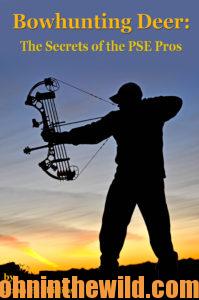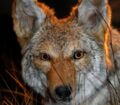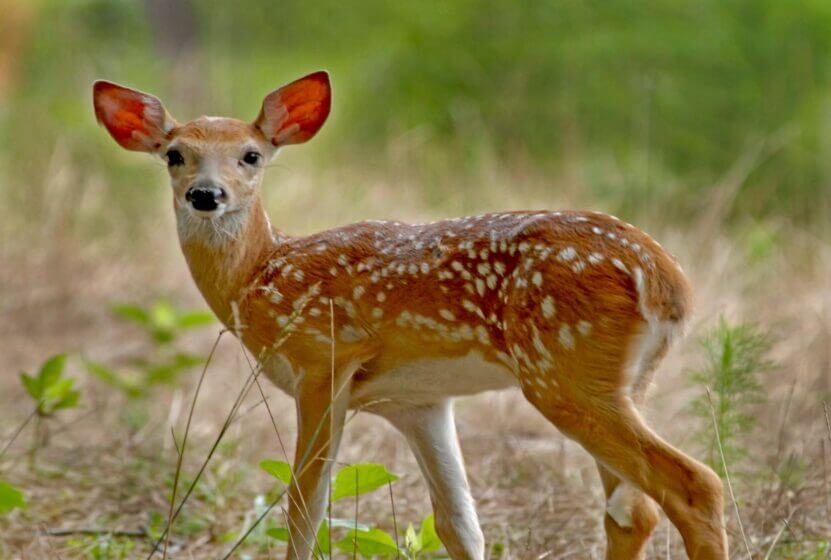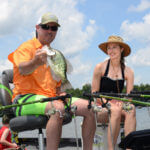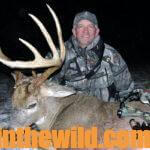Editor’s Note: Today outdoorsmen have begun to learn more about the white-tailed deer. In the past, we haven’t known the right questions to ask. But scientists and researchers have started studying deer more intensely.
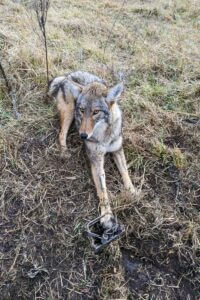 When we asked wildlife biologist Brian Murphy about the impact of coyotes on deer-management programs, he explained, “Coyotes are a relatively newcomer to the East. In the last 30 years, they’ve really expanded their ranges into the eastern U.S. Hunters are beginning to become more concerned about the effect of coyotes on the deer they hunt.”
When we asked wildlife biologist Brian Murphy about the impact of coyotes on deer-management programs, he explained, “Coyotes are a relatively newcomer to the East. In the last 30 years, they’ve really expanded their ranges into the eastern U.S. Hunters are beginning to become more concerned about the effect of coyotes on the deer they hunt.”
In past years, biologists hadn’t concerned themselves too much about coyotes because they believed that the coyotes might take a few fawns but not enough to dramatically impact the herds. However, in the last couple of years, several research projects have shed new light on the subject of coyotes and how they impact deer. Mississippi State University has been studying coyotes for several decades. Biologists’ research there indicates that:
- Coyotes are taking some fawn deer during the spring.
- Hunters randomly taking coyotes in a particular area has no impact on reducing the number of coyotes feeding on deer fawns because of the social structure of coyotes. Once a coyote population becomes established, there’s a very-strong social order and ranking of the animals in that population, including alpha males and alpha females. Once these dominant males and females establish their home ranges in a certain area, they keep the subordinate coyotes from occupying or sharing those same ranges. If a high-ranking coyote is incidentally harvested by a hunter, the coyote’s home range then may be filled by several other juvenile coyotes. So, in some instances, coyote hunters may actually increase the coyote population in a place by shooting coyotes.
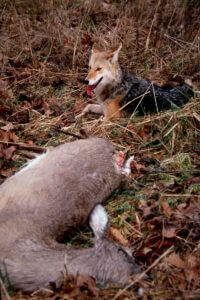
- The best-two defenses in the South to reduce coyote numbers are: adopt very-intensive and on-going trapping and predator-hunting programs that will last for several years; and, beat the coyotes at their own game by ensuring that there is adequate fawning cover on the property, which is the more-desirable and most-effective defense for hunters against coyotes. Fawning cover is characterized by low-growing, fairly-dense and impenetrable habitat that makes locating fawns very difficult for coyotes.
- A coyote has to get within 100 to 200 feet of a fawn to detect it during the first two weeks after the fawn’s birth because the fawn doesn’t have much scent then. Therefore, in a region with high-quality fawning cover that’s very thick and dense, the coyotes are less likely to find fawns.

- Does will be able to select the best fawning habitat, if the herd is in good shape with an appropriate number of deer that the habitat can support. Predation on fawns by coyotes is much greater on young does’ fawns because young does usually have lesser-quality sites to drop their fawns than the older does do, and young does aren’t as effective at defending their fawns against predators.
- Another effective way to help get rid of predators is called predator swamping, which means trying to have all the fawns on the ground born at the same time. When there’s a balanced age structure and enough bucks available to breed all the does, hunters will get very-concise breeding. When there’s concise breeding in the fall, there will be concise spawning in the spring, since most of the fawns born in a particular herd will all be born at the same time. When almost all the fawns are born at one time, the coyotes can’t take many of them because they only can eat so-many fawns at a time. However, when there’s a poorly-managed deer herd with skewed sex ratios and poor buck age structure, fawns will be born over a much longer time. Then coyotes can make a living eating fawns for 3 or 4 months.
John E. Phillips’ latest deer book “How to Hunt Deer Like a Pro: Volume II,” just was published on Amazon in print at https://www.amazon.com/gp/product/B0BGSP3QPB/ref=dbs_a_def_rwt_hsch_vapi_tpbk_p4_i4 The Audible version should be available by December. Since deer hunting and deer hunters are drastically changing each year, John interviewed some top deer hunters like Mark Drury, Dr. Larry Marchinton, Dr. Bob Sheppard, Pat Reeve, Gene Wensel, Cody Robbins, Ernie Calandrelli, Brian Murphy and Luke Brewster, who took the world’s largest whitetail, to learn their up-to-date techniques for successfully hunting deer and having more places to hunt. Also, John’s first book in that series “How to Hunt Deer Like a Pro” in Kindle, print and Audible at https://www.amazon.com/dp/B007D3H08M includes other outstanding deer hunters. Too, check-out John’s book, “Bowhunting Deer: the Secrets of the PSE Pros,” https://www.amazon.com/gp/product/B0091T1NKM/ref=dbs_a_def_rwt_hsch_vapi_taft_p1_i1, available now in Kindle, print and Audible versions. 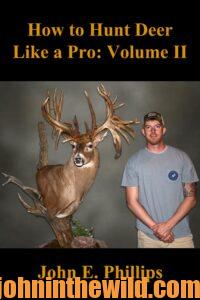 You may have to copy and paste these links into your browser. When you click on these books, notice on the left where Amazon says you can read and hear 10% of the Audible books for free. On the right side of the pages and below the offer for a free Audible trial, you can click on Buy the Audible book.
You may have to copy and paste these links into your browser. When you click on these books, notice on the left where Amazon says you can read and hear 10% of the Audible books for free. On the right side of the pages and below the offer for a free Audible trial, you can click on Buy the Audible book.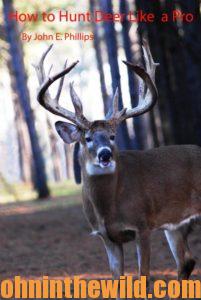
Tomorrow: Learn More about Coyotes & Deer